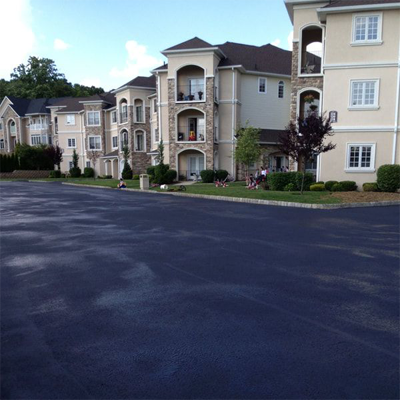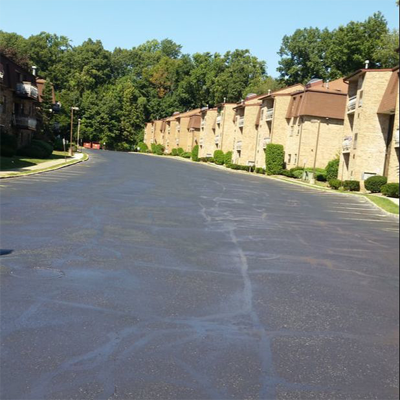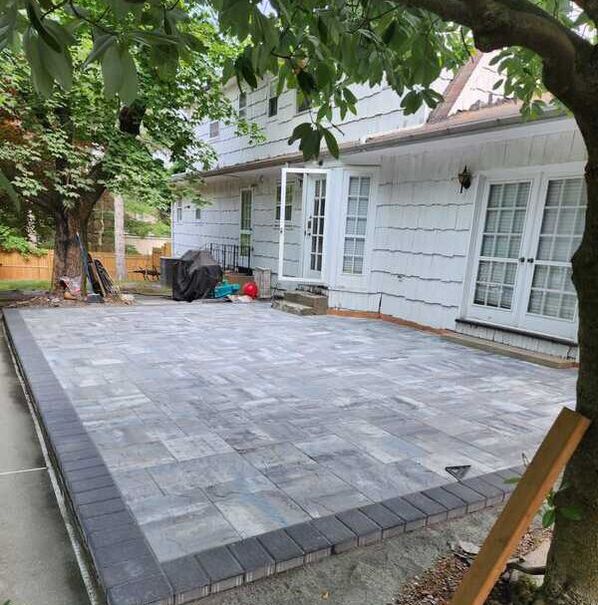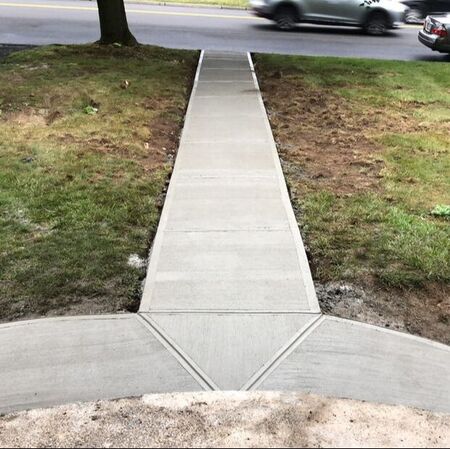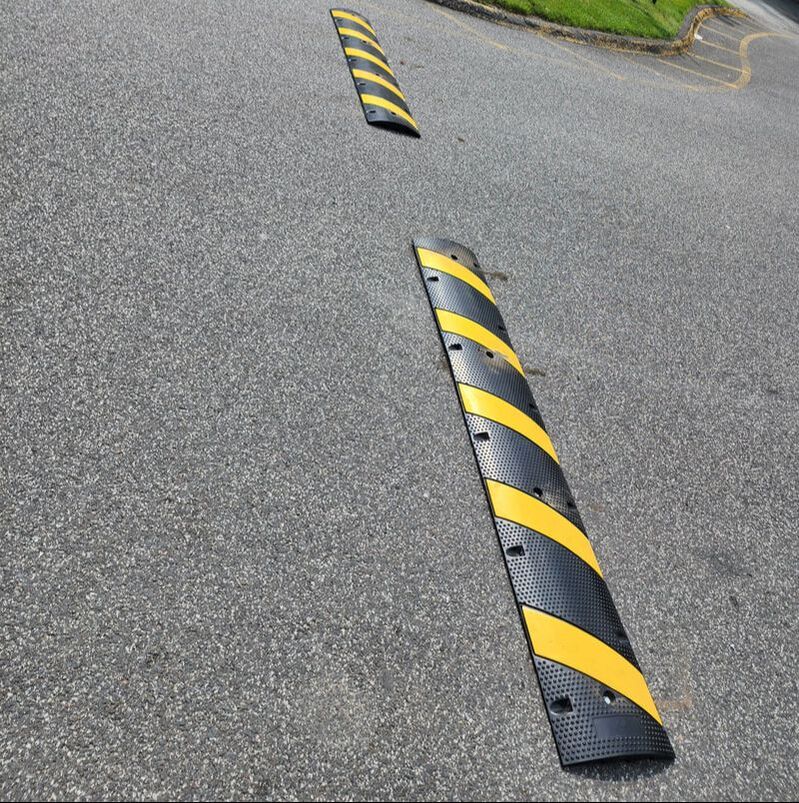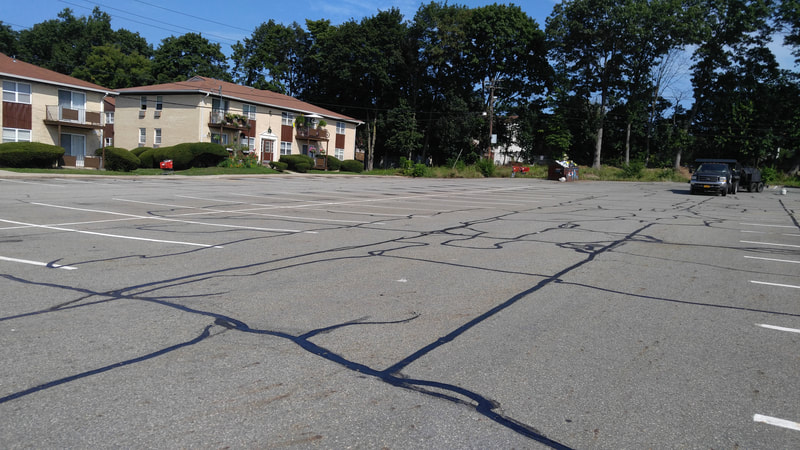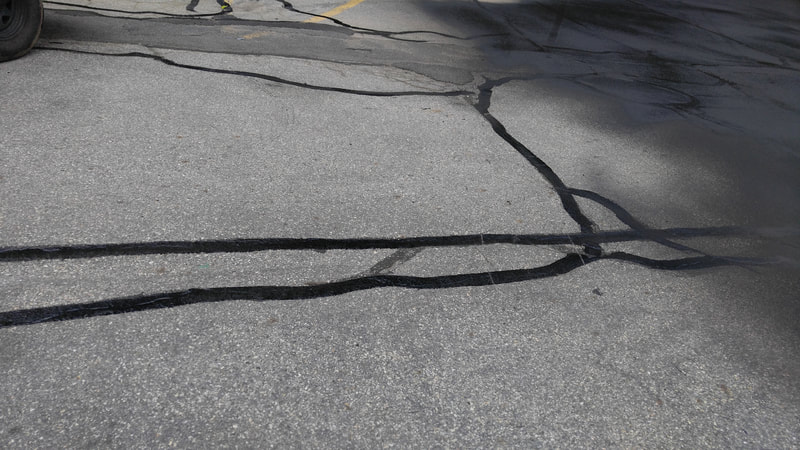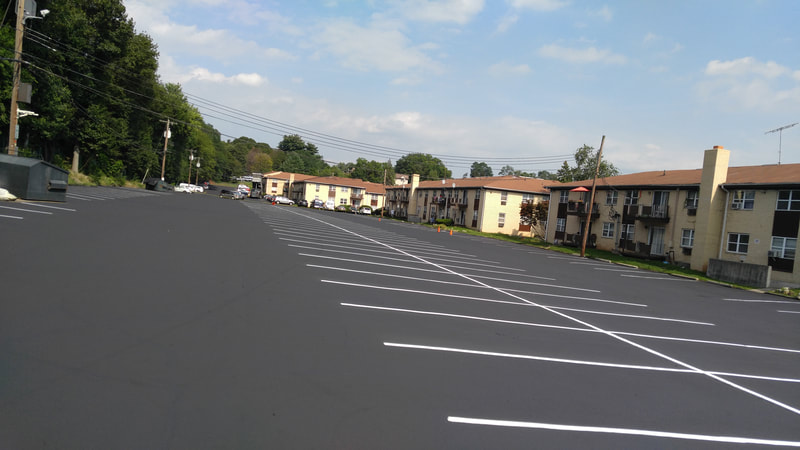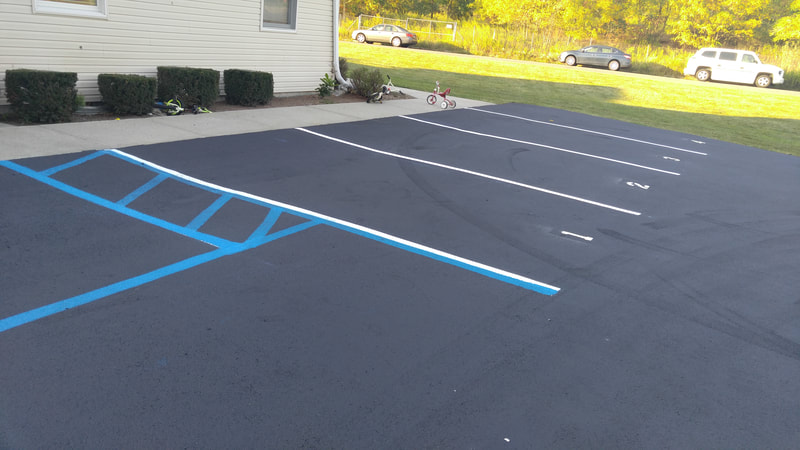|
When it comes to maintaining your driveway or parking lot, asphalt sealcoating stands out as a vital practice that ensures longevity and preserves aesthetics. Understanding the nuances of sealcoating can make all the difference in optimizing its benefits. Let's explore the essentials of asphalt sealcoating and its significance in pavement maintenance.
Is Sealcoating Asphalt Worth It? Absolutely. At its core, sealcoating acts as a formidable barrier, fortifying asphalt surfaces against a barrage of detrimental elements. UV rays, water intrusion, and corrosive chemicals pose constant threats to unprotected asphalt, leading to the formation of unsightly cracks, hazardous potholes, and premature degradation. By investing in sealcoating, property owners proactively shield their surfaces from these perils, effectively mitigating risks and averting the need for exorbitant repairs in the future. Cost Considerations While the initial expenditure may appear substantial, it pales in comparison to the staggering costs associated with extensive repairs or complete pavement replacement. Sealcoating emerges as a preemptive measure that translates into substantial long-term savings, as it significantly prolongs the lifespan of pavements and curtails the frequency of necessary interventions. Working With the Right Sealant Selecting the appropriate sealant is crucial for achieving optimal results. There are various types of asphalt sealers available, each offering unique advantages. At Driveway USA we work with mainly two sealants when it comes to residential - Asphalt Emulsion Sealer in New York & Coal Tar-Based in New Jersey. See here for the NY/NJ Prohibitions on the use and sale of coal tar-based pavement sealers Longevity of Seal Coating & Importance of Proper Application When properly applied, asphalt sealcoat can provide effective protection for 3 to 5 years. However, this lifespan is subject to variables such as climate conditions, traffic intensity, and regular maintenance efforts. Regular inspections and occasional touch-ups can help prolong the effectiveness of the sealcoat, ensuring optimal performance over time. Proper application is critical to sealcoating success. Applying sealcoat too thin or too thick can compromise its effectiveness. Thorough surface cleaning and preparation are imperative to ensure optimal adhesion and longevity of the sealcoat. Neglecting these steps can result in premature failure and diminished performance. Timing and Weather Considerations The timing of sealcoating plays a significant role in its efficacy. The best time to sealcoat is during the warmer months when temperatures are consistently above 50°F and there is no threat of rain for at least 24 to 48 hours. This allows for proper drying and curing of the sealcoat. If rain occurs shortly after sealcoating, it can wash away the sealant and compromise its effectiveness. Therefore, at Driveway USA we check the weather forecast and plan accordingly. Tips for Sealcoating Your Driveway or Parking Lot
|
CRACK FILLING AND CRACK SEALINGWhat Does Crack Sealing Do?
The primary purpose of crack sealing is to inhibit moisture penetration into the underlying layers of the pavement. Water infiltration is a leading cause of asphalt deterioration, as it can weaken the base materials, erode subgrade support, and accelerate the formation of cracks and potholes. By sealing cracks and joints, crack sealing helps to mitigate the effects of freeze-thaw cycles and temperature fluctuations on asphalt surfaces. Crack sealing also plays a crucial role in preventing the progression of existing cracks and prolonging the lifespan of asphalt surfaces. By filling and sealing cracks in their early stages, crack sealing prevents them from widening and spreading, thereby reducing the need for more extensive repairs in the future. This proactive approach helps to extend the service life of pavements and minimize maintenance costs over time. Understanding the Differences Between Crack Sealer and Crack Filler Maintaining your asphalt surfaces involves addressing cracks promptly, but understanding the distinctions between crack sealer and crack filler is essential for effective pavement care. Let's explore these differences and answer common questions to help you make informed decisions about crack maintenance. Crack Sealer vs. Crack Filler: Crack sealer and crack filler serve distinct purposes in pavement maintenance. Crack sealer is a flexible, rubberized material used to seal larger cracks and prevent water infiltration, protecting the asphalt foundation from further damage. On the other hand, crack filler is a thinner, liquid material designed to fill smaller cracks, preventing debris accumulation and inhibiting further deterioration. The longevity of crack filling varies depending on factors such as climate, traffic volume, and pavement condition. Typically, crack filling can last for 1 to 3 years, providing temporary protection and delaying the need for more extensive repairs. Cold Patch VS. Hot Tar Crack Filling: At Driveway USA, we work with both cold patch and hot tar crack filling. Cold patch crack filling is a convenient and effective method for repairing asphalt cracks, particularly in cooler temperatures or when immediate repairs are needed. This process involves using a ready-to-use asphalt patching material that does not require heating before application. Cold patch materials are designed to adhere well to the surrounding asphalt, providing a durable and long-lasting repair solution. However, it's essential to note that cold patch crack filling may not be as effective as hot tar crack filling in certain situations. While cold patch materials offer convenience and immediate results, they may not provide the same level of long-term durability and flexibility as hot tar sealants. Despite these limitations, cold patch crack filling remains a valuable option for temporary repairs or emergency situations where immediate action is necessary. By addressing cracks promptly with cold patch materials, property owners can prevent further damage and extend the lifespan of their asphalt surfaces until more permanent repairs can be undertaken. Hot tar crack filling, is a professional-grade method for repairing asphalt cracks using specialized equipment and materials. Hot tar crack filling offers several advantages over cold patch crack filling, particularly in terms of long-term durability and effectiveness. The heated sealant is designed to penetrate deep into cracks, creating a watertight seal that prevents moisture infiltration and inhibits further deterioration of the asphalt surface. Additionally, hot tar sealants have excellent flexibility and adhesion properties, ensuring long-lasting repairs that withstand fluctuations in temperature and traffic stress. |
|
The condition of your parking lot is the first impression your guest has of your property. A clean, well marked, and properly maintained parking surface can be a bigger than life "Welcome" mat. At Driveway USA, we use Sherwin-Williams durable high visibility traffic paint, applied with a commercial sprayer, and we design any pattern, layout, or design you may want.
Understanding Line Striping: Enhancing Safety Line striping, also known as pavement marking or road marking, refers to the process of applying visible lines and markings on paved surfaces, such as roads, parking lots, and driveways. These lines serve as guidelines for traffic flow, parking spaces, pedestrian walkways, and other designated areas. The importance of line striping cannot be overstated, as it plays a crucial role in maintaining order, safety, and efficiency in various environments. By clearly delineating lanes, parking spaces, and pedestrian pathways, line striping helps regulate traffic flow, prevent accidents, and optimize space utilization. Line striping is typically done using specialized equipment, such as line striping machines or paint sprayers, along with durable traffic paint or thermoplastic materials. The process involves meticulous planning and precise application to ensure accuracy and adherence to regulations and standards. The frequency of restriping a parking lot depends on several factors, including traffic volume, weather conditions, and pavement wear. As a general rule of thumb, parking lots should be restriped every one to two years to maintain visibility and effectiveness. |
PATCHINGWhen Driveway Patching Is The Right Choice
In the lifecycle of a driveway, wear and tear are inevitable. Small cracks and surface imperfections may start to appear over time, detracting from the overall appearance of your property. While these minor issues may seem insignificant at first, neglecting them can lead to more significant problems down the road. This is where driveway patching comes into play. Patching your driveway is an ideal solution when dealing with localized damage. Small cracks, minor surface imperfections, and isolated areas of deterioration can be effectively addressed through patching. By filling in these areas with the appropriate material, you not only restore the aesthetic appeal of your driveway but also prevent further deterioration. However, it's essential to recognize when patching alone is insufficient. In cases where the damage is extensive or severe, patching may only serve as a temporary fix. Large cracks, widespread deterioration, or significant sinking require more comprehensive repairs to ensure the structural integrity and longevity of your driveway. Choosing the Right Fill Material When it comes to driveway patching, the choice of fill material plays a crucial role in the effectiveness and longevity of the repair. At Driveway USA, we prioritize quality and durability in our materials to deliver lasting results for our customers. Asphalt remains one of the top choices for driveway patching due to its exceptional durability, affordability, and ease of installation. Its flexibility allows it to adapt to the natural movements of the ground, reducing the likelihood of future cracking or sinking. Additionally, asphalt provides a smooth surface that can withstand heavy traffic and adverse weather conditions, making it an excellent option for driveways in both residential and commercial settings. With Driveway USA, you can trust that we'll utilize the best materials and techniques to restore your driveway to its optimal condition. |
PAVING (BLACKTOP)Choosing the Best Option for Your Driveway
When it comes to enhancing the functionality and curb appeal of your property, investing in a well-paved driveway can make a significant difference. However, with various paving options available, it's essential to understand which type is best suited for your needs. What type of paving is best for a driveway? One of the most popular choices for driveways is asphalt, also known as blacktop. Asphalt offers numerous benefits that make it an attractive option for homeowners. Notably, asphalt driveways require less maintenance compared to alternatives like concrete or gravel. With minimal upkeep required, asphalt driveways provide a smooth driving surface, enhancing both convenience and aesthetics. Additionally, asphalt driveways are known for their durability, able to withstand heavy loads and harsh weather conditions. How long does it take for blacktop to harden? It's essential to consider the curing time of blacktop when opting for an asphalt driveway. While blacktop can be walked on within a few hours of installation, it typically takes around five days to fully cure and harden. During this curing period, it's crucial to avoid driving or parking heavy vehicles on the freshly laid blacktop to prevent damage. The curing time may vary depending on factors such as the grain size of the asphalt mixture. Finer grains tend to take longer to cure and harden compared to coarser ones. |
CONCRETEThe Benefits Of Using Concrete
Concrete has long been a cornerstone of construction, admired for its durability, versatility, and longevity. Whether it's used for driveways, sidewalks or foundations, concrete offers numerous advantages that make it a preferred choice for property owners. In this article, we'll delve into the benefits of using concrete, highlighting its durability, ease of maintenance, and overall value. Lasting Durability One of the most significant advantages of concrete is its exceptional durability. Unlike asphalt, which may require regular resurfacing and repairs, concrete is renowned for its longevity. When properly installed and maintained, concrete structures can withstand heavy loads, extreme weather conditions, and the test of time. This durability translates into long-term cost savings and peace of mind for property owners, as they can rely on their concrete investments to remain sturdy and reliable for decades. Ease of Maintenance Concrete's durability is further complemented by its low maintenance requirements. Unlike other materials that may require frequent sealing, patching, or repaving, concrete surfaces are relatively easy to maintain. Routine cleaning and occasional sealing are usually sufficient to keep concrete structures in top condition. This simplicity not only saves time and effort but also reduces long-term maintenance costs, making concrete a practical choice for homeowners and businesses alike. Cost-Effective Long-Term Investment Concrete's durability and minimal maintenance requirements result in lower lifetime costs, as property owners can avoid the recurring expenses associated with frequent repairs and replacements. Additionally, concrete's aesthetic appeal and ability to enhance property value further contribute to its cost-effectiveness, making it a wise investment for residential and commercial projects alike. Challenges in Repair Costs Despite its many benefits, it's essential to acknowledge that concrete can become pricier to repair if significant damage occurs. While concrete's durability minimizes the need for repairs, extensive cracks, settling, or structural issues may necessitate costly fixes. Compared to asphalt, which can be relatively easy and inexpensive to patch or resurface, concrete repairs often involve more labor-intensive and specialized procedures. |
PAVERS & BELGIUM BLOCKSThe Benefits Of Belgium Blocks
If durability is your top priority when it comes to selecting the material for your driveway, then Belgium Block, also known as Cobblestone Pavers, should be your first consideration. Renowned for their exceptional strength and longevity, cobblestone pavers offer unmatched durability compared to other paving materials. Belgium Block and Pavers are not only limited to driveways but can also be utilized for walkways and patios. Their versatility allows them to seamlessly integrate into various landscaping designs, enhancing the overall appeal and functionality of outdoor spaces. In addition to their durability and versatility, cobblestone pavers offer another significant advantage – they add intrinsic value to your property. The unique and appealing look they create can significantly enhance the curb appeal of your home, leaving a lasting impression on visitors and potential buyers alike. Low Maintenance Requirements Despite their robust nature, Belgium Blocks require minimal maintenance to retain their beauty and functionality. Regular sweeping and occasional rinsing with water are usually sufficient to keep cobblestone pavers clean and free of debris. Unlike some other paving materials that may require sealing or resurfacing over time, Belgium Blocks are inherently durable and resistant to wear, offering long-lasting performance with minimal upkeep. Eco-Friendly Choice Belgium Blocks are a sustainable paving option, as they are typically made from natural stone materials such as granite or basalt. Their porous surface allows rainwater to penetrate the ground, reducing stormwater runoff and promoting groundwater recharge, making them an eco-friendly choice for conscientious homeowners. Customization Options With Belgium Blocks, you have the flexibility to customize your paving design according to your preferences and requirements. Whether you prefer a traditional cobblestone pattern or a more contemporary layout, cobblestone pavers can be arranged in various configurations to achieve the desired look. |
FREQUENTLY ASKED QUESTIONS
How Much Does It Cost to Top Coat an Asphalt Driveway?
Cost ranges may vary, call us for a free estimate on your driveway or parking lot.
Is Applying Seal Coat Important?
Yes, applying seal coat to an asphalt driveway is crucial for maintaining its longevity and appearance. Not only does sealcoating extend the lifespan of your asphalt pavement, but it also offers a cost-effective solution. By providing a protective barrier against UV rays, water, oil, and other damaging elements, seal coating helps prevent cracks, potholes, and deterioration, ultimately extending the life of the driveway.
How Long Does It Take for Sealcoat to Dry?
The drying time for sealcoat can vary depending on factors such as temperature, humidity, and thickness of the application. In general, sealcoat dries to the touch within a few hours, but it may take 24 to 48 hours to cure completely. It's essential to avoid walking or driving on the freshly sealed surface until it has fully dried to prevent tracking and damage.
What Is the Best Time of Year to Seal an Asphalt Driveway?
The best time to seal an asphalt driveway is during the warmer months when temperatures are consistently above 50°F (10°C) and there is no threat of rain for at least 24 to 48 hours. Spring and early fall are typically ideal times for seal coating, as the weather conditions are optimal for proper drying and curing of the sealant.
How Long After Sealing Driveway Can I Drive on It?
It's recommended to wait at least 24 to 48 hours before driving on a newly sealed driveway to allow the sealant to cure properly. Driving on the driveway too soon can cause premature wear and damage to the seal coat, compromising its effectiveness.
How long does crack filling last?
The longevity of crack filling depends on various factors, including the severity of the cracks, the quality of the filler used, and environmental conditions. Generally, properly applied crack fillers can last for several years, helping to prevent further deterioration and extending the lifespan of the asphalt surface.
How long does it take for crack fillers to heal?
The drying time for crack fillers can vary depending on the type of filler used and environmental conditions. In most cases, crack fillers dry within a few hours to a day, but it's essential to follow our recommendations for curing time before applying seal coat or allowing traffic on the treated area.
How often should a parking lot be restriped?
Parking lots should be restriped regularly to maintain visibility, safety, and compliance with local regulations. The frequency of restriping depends on factors such as traffic volume, weather conditions, and the type of paint or thermoplastic used. In general, parking lots should be restriped every 1 to 2 years or as needed to ensure clear and visible markings.
How long does it take for line striping to dry?
In general, line striping paint dries within 30 minutes to an hour, while thermoplastic may take several hours to cure completely. It's important to allow adequate drying time before allowing traffic on the freshly striped area to prevent smudging or damage to the markings.
How Thick Is a Blacktop Driveway?
The thickness of a blacktop driveway typically ranges from 2 to 3 inches.
AT WHAT POINT DOES THE DRIVEWAY NEED TO BE RIPPED OUT AND REPLACED?
If the driveway is experiencing significant crumbling, water problems such as puddling, or poses safety hazards, it may be time to consider ripping out and replacing it. Additionally, driveways with multiple layers of blacktop, especially exceeding three layers, may warrant replacement to ensure structural stability and longevity.
how soon can you get the job done?
Typically, we strive to complete the job within the customer's timeline. Our team is dedicated to efficiency and flexibility, ensuring that we meet your project deadlines promptly and professionally.
how long after paving a driveway do we need to sealcoat?
Typically, we recommend waiting between 3 to 9 months after paving a driveway before sealcoating. This waiting period allows the driveway to settle and the asphalt to weather, ensuring optimal conditions for sealcoating. By waiting until this time, we can address the material properly, preventing sinking and applying the necessary protection for long-lasting results.
How often do we need to sealcoat the driveway?
Generally, we advise sealcoating the driveway every 1.5 to 2 years. Regular sealcoating helps extend the lifespan of the driveway significantly. The more frequently the driveway is sealed, the longer it will last. With proper maintenance, a driveway can endure for over 20 years, providing reliable performance and curb appeal.
Does crack filling completely get rid of all THE cracks?
While crack filling effectively addresses cracks by preventing them from further opening, it does not eliminate them entirely. Over time and with natural wear, cracks may reopen, especially depending on their size. However, crack filling serves as a proactive measure to mitigate further damage and maintain the integrity of the driveway.
INTERESTED IN WORKING WITH US?We have been transforming the ideas and visions into award-winning projects.
|

